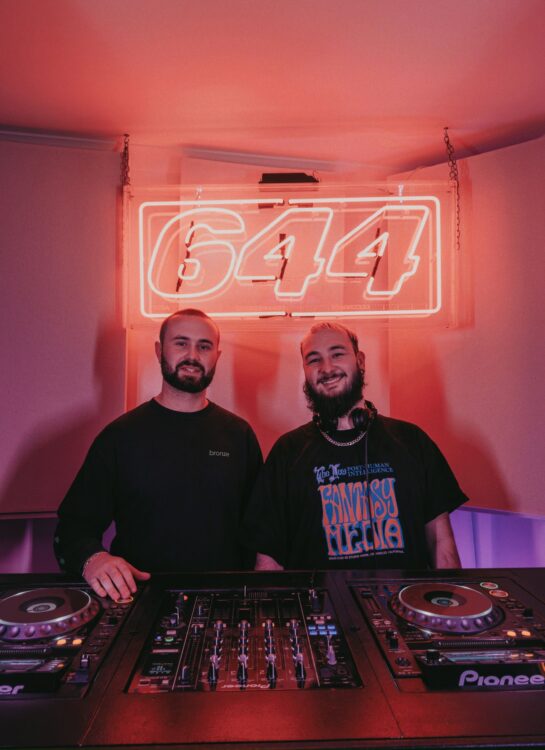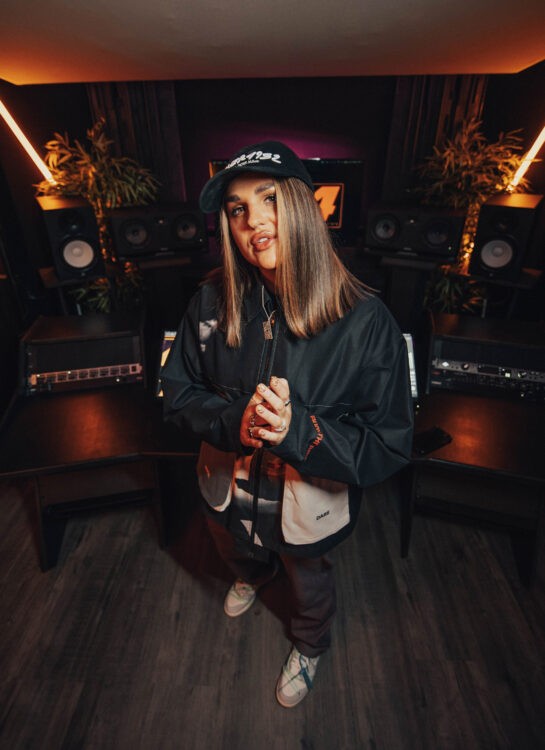In collaboration with

- Words Notion Staff
In partnership with Studio Monkey Shoulder, Glasgow-based 644 Studios create space for emerging artists to thrive.
644 Studios is a grassroots recording and creative space based in Glasgow, founded by K4CIE and LUDE to give a platform to the next wave of Scottish talent. From hip-hop and R&B to underground experimental sounds, the studio has become a home for artists often left out of traditional industry pathways – offering professional recording, visual content, DJ curation and, crucially, a sense of community.
In this How To Guide, the team behind 644 share the realities of building a creative hub from the ground up: the financial balancing act, the pressure to stay accessible, and the lessons they’ve learned about turning ideas into sustainable projects without compromising values.
With support from Studio Monkey Shoulder – the initiative championing grassroots music – 644 open up about the challenges of operating in an underfunded landscape, and why resilience, consistency, and community remain the core of their approach. For anyone navigating the intersection of creativity and business, their story is a candid reminder that independence doesn’t mean isolation.
How did 644 Studios get started?
644 Studios was born out of necessity. We saw incredibly talented artists in Glasgow, especially in hip-hop, R&B, alternative genres who had the drive and vision, but no access to the right spaces or industry support. We were those artists too. Instead of waiting for opportunities, we created our own. 644 started in 2020 as a DIY hub built from scratch with just myself (K4CIE) and LUDE without backing, without grants, just pure belief in what it could become.
Tell us about the Glasgow music scene, why did you open 644 Studios there?
Glasgow has heart. There’s a rawness here, and some of the most unique voices in the UK are coming out of this city. But the industry infrastructure isn’t built to support Scottish rap, R&B, grime or drill in the same way it supports indie or electronic music. There’s not much funding. No one’s “made it” yet in this space. So we opened 644 to fill that gap. It’s a home for the scenes that exist in Scotland.
How do you keep attracting new creatives to the space while maintaining a sense of community and shared purpose?
Our reputation comes from our work. We don’t chase trends or try to appeal to everyone. Artists come because they’ve seen what we’ve done with others and they want that same level of care. It’s not always easy, sometimes bookings are slow, and people in our scene don’t always have money to spend on long-term development but we stay consistent, and that keeps the culture growing.
What have you learned about turning creative output – like your DJ series – into something that also supports the business financially?
You can’t rely on good content alone to keep a studio afloat, you have to be strategic. Our DJ series has been a powerful way to spotlight the incredible talent here in Scotland, while also showing people what 644 Studios is really about. It’s helped us build visibility, spark new partnerships, and connect with wider audiences both locally and across the UK. Behind the scenes, projects like this require serious dedication; they take time, energy, and a committed team. We’re lucky to have people like TJ Sedisa and Sean Cosgrove as part of our DJ series crew. Their creative vision and consistency have played a huge part in its growth. While the financial returns aren’t instant, the long-term impact has been worth it. We’ve seen real traction, built new relationships, and shown that you can stay true to your ethos while still building something sustainable. It’s all about patience, purpose, and playing the long game with a solid team behind you.
How do you strike a balance between investing in gear that artists want and staying financially sustainable as a studio?
It’s hard. Gear is expensive. We only upgrade when we know it will benefit multiple clients across different sessions. We prioritise what gives the best value – solid mics, clean interfaces, good headphones. It’s tempting to go all out, but when money’s tight, you have to make every piece of kit count. And to be honest, we still don’t have everything we want, we still have a long way to go. We’re building this space piece by piece.


What are some practical ways you’ve kept the studio accessible to rising artists while still covering your costs?
We’ve offered free sessions, discounted bundles, and flexible payment plans – whatever it takes to meet people where they’re at. We understand how stressful music costs can be, and that’s shaped how we approach access. But the truth is, we’re often absorbing those costs ourselves. There are weeks when the bills are tough. Still, we believe in the artists we work with, and that belief keeps us showing up. Accessibility shouldn’t be a trend – it’s a responsibility.
What challenges have you faced so far and how have you overcome them?
Honestly, building 644 Studios has never been easy – we’ve faced more than our fair share of challenges. There’s very little financial support out there for the kind of grassroots, genre-diverse work we do, and the artists we support often don’t have the resources to reinvest yet. We’re operating in a scene that’s still finding its feet, there’s so much talent, but not a lot of infrastructure around it. That said, we’ve stayed standing because of our resilience, our belief in the vision, and the strength of our community. We’ve learned how to stretch resources, work smart, and turn creative wins into long-term impact. There haven’t been any shortcuts, just consistency, hard work, and a lot of passion. If you’re thinking about opening your own studio: save first, build a real plan, and prepare to dig deep. But know this – if you stay committed to what you believe in, surround yourself with the right people, and keep your mission front and centre, you can build something to be truly proud of.
How do you approach creative collaborations so that they benefit both the artist and the studio?
We make sure it’s mutual. Whether it’s a video shoot or a songwriting session, we set expectations from the jump. Artists know what they’re getting, and we know what we’re offering. We don’t do one-sided relationships, it has to make sense for everyone involved. And we treat collaborations like partnerships. Be kind and respect everyone!
What’s been most effective in building long-term relationships with DJs, producers, and collaborators?
Loyalty. We build real friendships with the people we work with. We celebrate their wins and show up for them consistently. We don’t just provide a service, we’re part of their journey. That builds long-term trust, and it’s why people stick with us.
What advice would you give to other creative hubs trying to grow without losing their DIY values?
Know your values and stick to them, even when things get hard. Be transparent. Be realistic. Not every opportunity is a good one. And don’t expect overnight success. You’ll have to sacrifice. You might go months or years without a grant, a gig, or a big booking. But if your foundation is solid, you’ll find a way through. DIY is hard but it shapes you!
What’s next for you?
We’re focused on building deeper roots in the Scottish music scene while continuing to amplify emerging talent. Behind the scenes, we’re upgrading our equipment, expanding our creative team, and exploring new ways to support artists beyond just studio time, whether that’s content creation, strategic development, or industry connections. Collaboration is a big part of our future. We’re in ongoing conversations with radio stations, festivals, labels, and other independent platforms about how we can connect the dots and create stronger pipelines for Scottish artists. We also want to shine a brighter light on Scotland’s underground, not just in Glasgow, but nationally and beyond. Ultimately, our goal is to build a long-term legacy for independent music in Scotland. We’re not just here for the moment, we’re committed and here to shape what comes next.

